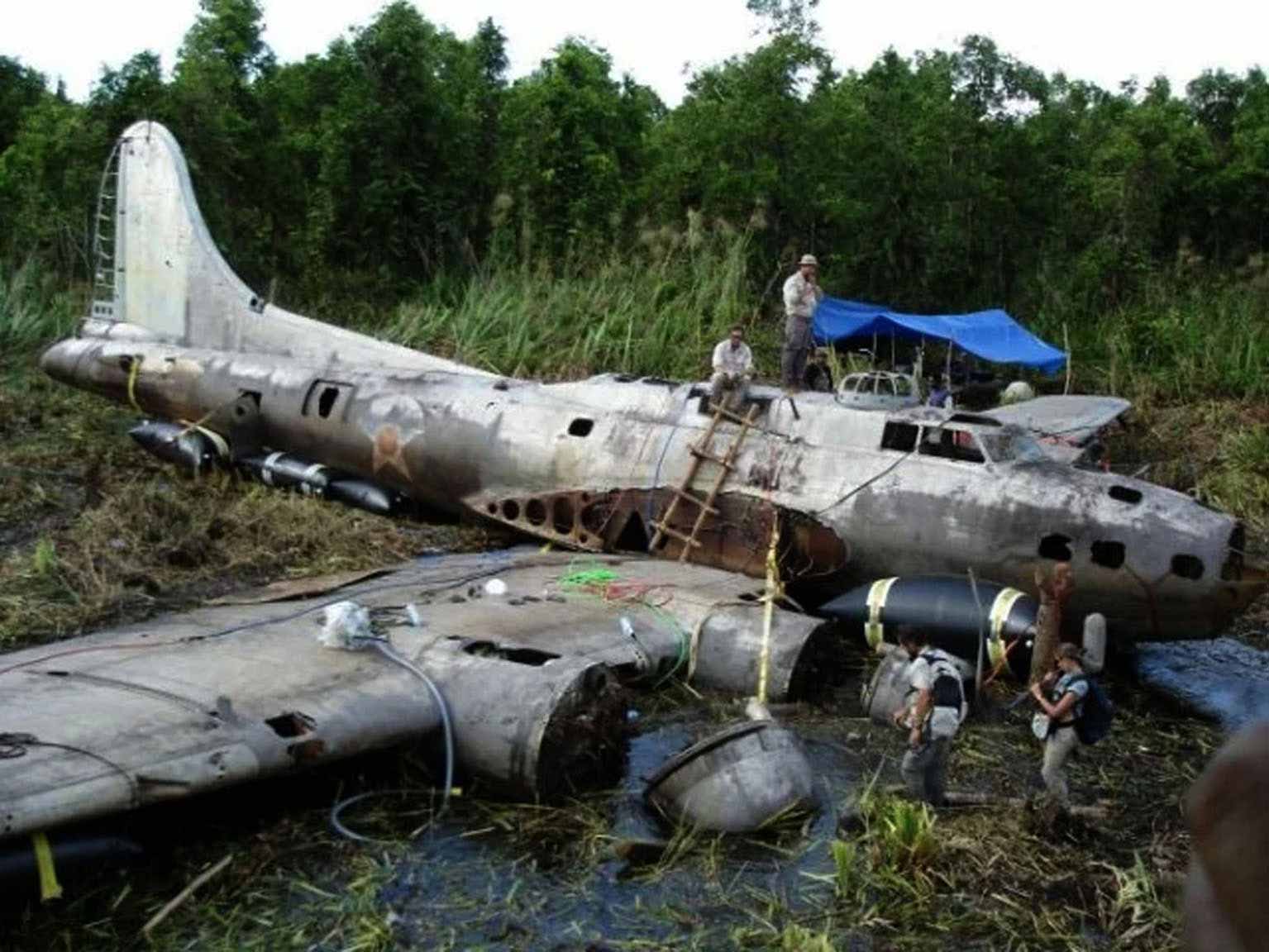A historic discovery was made in the untamed forests of Papua New Guinea in 1972. Australian military personnel flying over the Agaiambo swamp saw a partly submerged aircraft, which proved to be the long-lost Boeing B-17E Flying Fortress known as the Swamp Ghost. This astonishing discovery not only cleared up the enigma surrounding the aircraft’s disappearance during WWII but also shed light on the bravery and sacrifice of its crew. This article looks into the unique story of the Swamp Ghost, from its discovery and recovery to its historical importance and preservation.
Papua New Guinea: An Uncharted Frontier
With its lush jungles, high mountains, and volcanic landscapes, Papua New Guinea has long been regarded as one of the world’s least visited places. Its vast and varied ecosystems are home to many unusual flora and wildlife, enticing explorers and academics. This region’s remoteness and restricted accessibility have contributed to its image as a mysterious and undiscovered frontier.
Agaiambo Swamp: Nature’s Fortress of Secrecy
The Agaiambo swamp, located in Papua New Guinea’s Oro Province, unwittingly acted as a protector of the swamp Ghost. This perilous marsh, filled with crocodiles and ringed by dense forests, has remained chiefly inaccessible to humanity. The now-extinct Agaiambo people formerly inhabited the marsh, but their absence left it unspoiled and undisturbed, shrouding it in mystery.
The Astonishing Revelation: Identifying the Swamp Ghost
As the Australian military troops flew above the Agaiambo swamp, their eyes widened in surprise at the sight before them—a massive aircraft partly hidden amid the thick vegetation. Further examination proved it to be the Swamp Ghost, the lost Boeing B-17E Flying Fortress that had grabbed the imagination of aviation enthusiasts for almost three decades. This historic finding ended a long-standing mystery and sparked fresh interest in the fate of this renowned aircraft.
David Tallichet Jr.: A Driving Force in the Salvage Operation
David Tallichet Jr., a WWII veteran and aviation enthusiast, was instrumental in the Swamp Ghost’s recovery. Tallichet’s keen interest in military aircraft and his considerable flying experience made him an invaluable asset to the rescue operation. His unwavering efforts and massive collection of restored aeroplanes proved his commitment to preserving aviation history.
The Salvage Operation: Overcoming Challenges and Preserving History
Tallichet teamed up with aviation archaeologist Fred Hagen in 1989 to start the daring endeavour of retrieving the Swamp Ghost. The operation offered various difficulties, including travelling over dangerous terrain, dealing with inclement weather, and overcoming logistical obstacles. Despite these challenges, the team’s dedication and precise preparation resulted in the Swamp Ghost’s successful recovery in 2006.
The Pacific Aviation Museum: A New Home for a Legend
Following its rescue, the Swamp Ghost was relocated to the Pacific Aviation Museum at Pearl Harbour. This shift was a watershed point in the aircraft’s history, as it became a symbol of bravery and sacrifice, indelibly etched in the annals of time. The museum’s commitment to conserving and displaying the Swamp Ghost assures its incredible narrative will continue to excite and educate future generations.
Boeing B-17E Flying Fortress: The Epitome of WWII Aviation
The Boeing B-17E Flying Fortress, which first flew in the late 1930s, became iconic during WWII. The B-17E was essential in strategic bombing missions due to its rugged build, long-range, and tremendous armament. Its ability to survive enemy fire earned it the moniker “Flying Fortress” and cemented its place as one of the most iconic icons of American airpower.
The Tragic Fate of the Swamp Ghost: From Mission to Emergency Landing
The Swamp Ghost’s tragic voyage started on December 6, 1941, only one day before the assault on Pearl Harbour. However, technical problems and the Japanese assault on Rabaul led the aircraft to deviate from its planned course. In an unfortunate turn of events, the Swamp Ghost was forced to make an emergency landing in the Agaiambo swamp, far from the protection of its base.
Surviving the Crash Landing: Perseverance Amidst Adversity
Captain Frederick “Fred” C. Eaton Jr. piloted the Swamp Ghost to an emergency landing in the dangerous Agaiambo swamp. Surprisingly, the crew survived the accident with just minor injuries. They embarked on an arduous trip through the marsh and deep woodlands, facing hunger, disease, and tiredness as they were stranded in a new, sterile environment. After navigating the hazardous terrain for days, locals and Australian authorities finally saved them.
Rediscovery of the Swamp Ghost: A Tale Resurfaced
Decades passed, and the Swamp Ghost’s existence was forgotten until 1972, when Australian troops unexpectedly performed a flypast upon the aircraft. This coincidental finding rekindled worldwide interest in the Swamp Ghost, motivating increased attempts to preserve its history and share its incredible tale with the rest of the globe.
Preserving a National Treasure: Honoring the Past, Inspiring the Future
Following its rescue, the Swamp Ghost underwent a long and detailed repair procedure. The Pacific Aviation Museum’s ultimate location represented the victorious climax of attempts to preserve this historical artefact. The museum’s dedication to methodically rebuilding the aircraft and exhibiting it as a symbol of courage guarantees that the Swamp Ghost’s legacy continues, motivating visitors and future generations to respect World War II sacrifices.
Conclusion
The incredible story of the Swamp Ghost exemplifies the irrepressible spirit of human invention, tenacity, and courage. This historic aeroplane remains a tribute to the sacrifices made by soldiers who fought in World War II, from its distant resting place in the Agaiambo swamp to its restoration and preservation at the Pacific Aviation Museum. The Swamp Ghost’s narrative continues to fascinate and inspire, reminding us of the human spirit’s tenacity and the value of preserving our common heritage.




